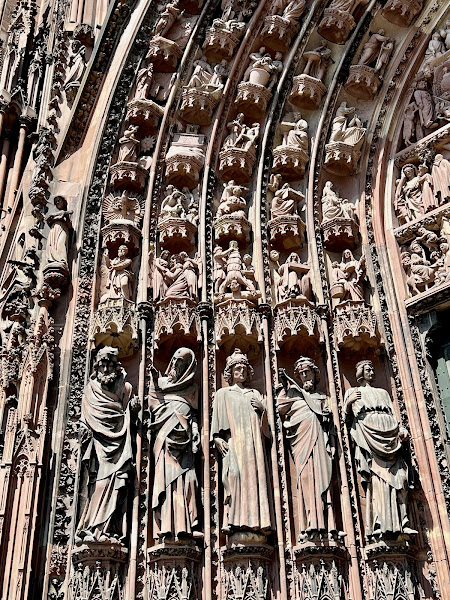 |
Dinner at a lovely restaurant in Strasbourg
|
 |
With our dinner in Strasbourg we enjoyed this wine. We liked it so much that we went to the winery, had a wonderful tasting with one of the family members, and of course filled our car with Rieslings from Blanck.

|
Using Strasbourg as our home base we were able to explore many of the sights Alsace had to offer. We visited The Butterflies Garden. In the tropical atmosphere of an acclimatized greenhouse building we witnessed an unimaginable array of colorful butterflies busily going about their daily business feasting on all types of lush vegetation. We had to be careful where we stepped. The butterflies flew all around us, alighting on plants, flowers, or on the ground. The butterflies were from brilliant blues, to red and black, to black and white and so much more. Some were psychedelic as they flashed their colors flitting from flower to plant to feeding trays laid out for them. Their life span is only about two weeks. I didn't want to leave this incredible show of nature.
 |
| We were careful where we stepped |
We found a place for lunch. I had my steak haché (aka raw hamburger meat) with an egg yoke to put on top.
 |
| We ate on the patio with a lovely view of a vineyard. After all, we are in Alsace. |
The NaturOparC is the Reintroduction Center of Storks. They are committed to the preservation of regional biodiversity and are involved in the breeding and reinforcement programs in the wild. They have done it for the White Stork, the European Otter and the Great Hamster.There we saw storks in their natural environment. We also viewed various other birds, animals, and fish.
 |
| Two nests of baby storks |
 |
| This stork was looking for food |
 |
| There was a wonderful collection of turtles |
 |
| Mealtime for the babies |
 |
| There were storks everywhere you looked. The park was lush, green and a beautiful place to spend part of a day. Since it was near the butterfly park we saw escapees enjoying their freedom in this next door parkland. |
 |
| Here is a little idea of what the nests look like in the beginning |
 |
| Family time |
 |
| Cormorant drying its wings. |
 |
| There were other beautiful birds, besides the storks |
 |
| The Great Hamsters |










































































